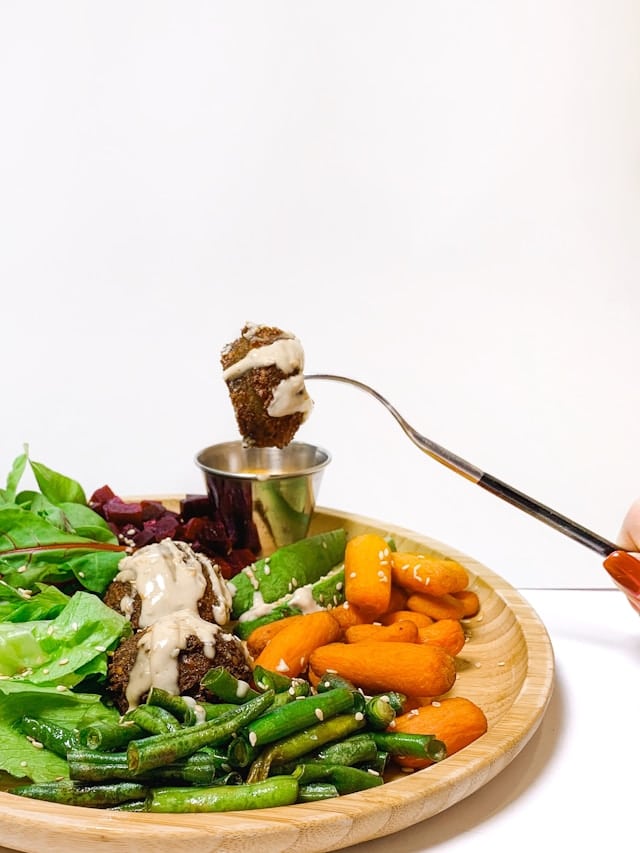How to Construct a Balanced Meal Plan for Adolescent Vegetarians?

In the realm of healthy eating, vegetarianism is seeing a rise in popularity, especially among the younger generation. With concerns about the environment, animal welfare, and personal health, many adolescents are choosing to adopt a vegetarian diet. However, creating a balanced vegetarian meal plan can be challenging, especially for growing adolescents. Knowing which foods to include, how much of each food group is needed, and making sure all necessary vitamins and minerals are supplied is paramount. In this article, we will walk you through how to construct a balanced meal plan for adolescent vegetarians. We’ll discuss the importance of vital nutrients like iron, the role of fortified foods, the benefits of eating a variety of fruits and vegetables, and how to ensure the diet is balanced and healthy.
Incorporating Iron-Rich Foods in the Diet
Iron is an essential nutrient that is often overlooked in vegetarian diets. It plays a vital role in transporting oxygen in the blood and supports growth and development – critical for adolescents. While meat is a primary source of iron, there are many vegetarian foods rich in this nutrient.
Also to read : Orthopedic solutions for greater comfort and relief
Beans, lentils, and chickpeas are excellent sources of iron. A simple cup of these can provide a significant portion of the daily requirement. Dark leafy greens, such as spinach and kale, are also rich in iron. Whole grains, fortified cereals, and bread can contribute to the daily iron intake. Adolescents should aim to eat a variety of these foods throughout the day to meet their iron needs.
Eating a Variety of Fruits and Vegetables
A common misconception about vegetarian diets is that they’re all about eating salads. This couldn’t be further from the truth. A balanced vegetarian diet should have a wide variety of fruits and vegetables. They come packed with different vitamins, minerals, and antioxidants necessary for a healthy body.
Also read : What Are the Effects of Social Media on Body Image and Eating Disorders?
Every day, adolescents should aim to eat at least five servings of fruits and vegetables. This can include a mix of fresh, frozen, canned, or dried varieties. For example, a breakfast can have a fresh fruit salad or a smoothie, lunch can include a vegetable wrap or salad, and dinner can have a stir-fry with various vegetables.
Getting Essential Vitamins through Fortified Foods
While a plant-based diet can provide most of the necessary nutrients, there are certain vitamins, like B12 and D, which are predominantly found in animal products. This doesn’t mean that vegetarians can’t get these vitamins. Many foods are fortified with these essential vitamins.
Fortified foods are those which have nutrients added to them that don’t naturally occur in the food. These include products like fortified plant milks, breakfast cereals, and nutritional yeast. Including these in the daily diet can help adolescents meet their vitamin B12 and D requirements.
Balancing Protein in a Vegetarian Diet
Protein is a crucial nutrient for everyone, especially for adolescents, as it supports growth and development. People often associate protein with meat, but there are numerous vegetarian foods that are excellent sources of protein.
Foods like beans, lentils, tofu, tempeh, seitan, and quinoa are rich in protein. Adolescents should strive to include a good source of protein in every meal. Like, a breakfast can have a quinoa porridge, lunch can be a chickpea salad, and dinner can be a tofu stir-fry.
Meal Planning for a Balanced Vegetarian Diet
Meal planning is the key to ensuring a balanced vegetarian diet. It allows you to ensure that all food groups and nutrients are included in the right amounts.
Breakfast could be a bowl of fortified cereal with a piece of fruit and a glass of fortified plant milk. For lunch, try a vegetable wrap with hummus and a side salad. Dinner could be a plate of whole grain pasta with a variety of veggies and a side of beans for protein. Snacks can include pieces of fruits, nuts, or yogurt.
Notice the variety and balance in these meal suggestions. They include different food groups, providing an array of vitamins, minerals, and nutrients necessary for adolescents. By planning meals this way, you ensure that the vegetarian diet is not only healthy but also enjoyable and satisfying.
Remember, as you set out to construct a balanced meal plan for adolescent vegetarians, consult a healthcare professional or a registered dietitian. They can provide personalized advice based on specific needs and growth requirements.
Understanding the Importance of Omega-3 Fatty Acids
Omega-3 fatty acids are vital for good health and play a key role in brain function and growth. Given their significance, it’s crucial to include them in an adolescent vegetarian’s meal plan. The main sources of omega-3 fatty acids are typically fish and other seafood. However, vegetarians can get these fatty acids from different sources.
Flaxseeds, chia seeds, and hemp seeds are rich in a type of omega fatty acids called ALA, which the body can partly convert to EPA and DHA – the active forms of omega-3. Walnuts and algae-based supplements are also excellent sources of omega-3.
Additionally, certain plant oils such as flaxseed oil, soybean oil, and canola oil contain these beneficial fatty acids. Foods fortified with omega-3, such as certain brands of eggs, yogurt, and milk, are another good option.
For a balanced vegetarian diet, adolescents should aim to incorporate these foods into their meal plan. For instance, chia or flax seeds can be added to breakfast cereals, salads, or smoothies. Using flaxseed or canola oil in cooking and salad dressings can also help increase omega-3 intake.
Including Dairy Products for Calcium and Vitamin D
Calcium and Vitamin D are key nutrients for bone health and growth – which is especially important during adolescence. Dairy products are the prime sources of both these nutrients. For lacto-ovo vegetarians, who consume eggs and dairy, including dairy products like milk, cheese, and yogurt in their diet can provide these essential nutrients.
However, for vegetarian adolescents who avoid animal products, including milk and dairy, there are several plant-based alternatives. Fortified plant-based milks such as almond, soy, and oat milk are good sources of calcium and Vitamin D. Tofu made with calcium sulfate, and green leafy vegetables like broccoli and kale, also provide calcium.
Sunlight is a primary source of Vitamin D. However, during the winter or for adolescents who live in less sunny areas, fortified foods or supplements might be necessary. Fortified cereals, juices, and plant-based milks are common options.
Conclusion: Crafting a Well-Rounded Vegetarian Meal Plan
Constructing a balanced meal plan for adolescent vegetarians requires careful consideration and planning. It’s crucial to ensure the diet includes all necessary food groups and nutrients, from protein and iron to vitamins, minerals, and omega fatty acids.
A balanced vegetarian diet should not just be about avoiding meat, poultry, and fish, but about embracing a wide variety of fruits, vegetables, whole grains, legumes, seeds, and plant-based alternatives to dairy products. It’s also worth considering fortified foods and possibly supplements to secure essential nutrients that are predominantly found in animal products.
Creating a vegetarian meal plan doesn’t have to be a daunting task. By understanding the nutritional needs of adolescents and the nutrient content of different foods, you can create a varied and balanced diet.
Remember, it’s always wise to consult a healthcare professional or a registered dietitian when creating a meal plan for adolescent vegetarians. They can provide personalized advice based on specific needs and growth requirements. With the right planning and guidance, your adolescent can thrive on a vegetarian diet, promoting not just personal health but also contributing to a more sustainable and compassionate world.
